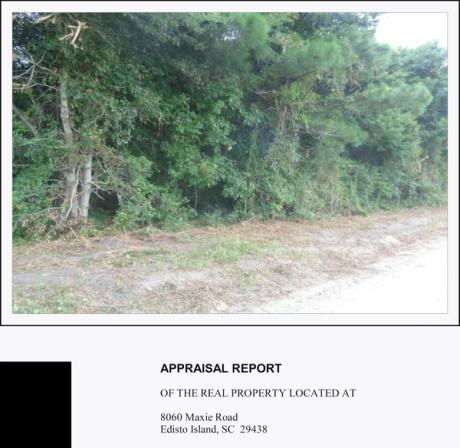
Cameron Rowland, Depreciation, 2018. Restrictive Covenant; 1 acre on Edisto Island, South Carolina
40 acres and a mule in slavery reparations originated in General William Tecumseh Sherman’s Special Field Orders No. 15, issued January 16, 1865. Sherman’s Field Order 15 was issued out of concern of a potential uprising by the thousands of former slaves who followed his army when it arrived in Savannah.[1]
The land order stated that “the Charleston Islands to the south, the abandoned rice paddies along the rivers thirty miles from the sea, and the country bordering the Saint Johns River, Florida, are reserved and set apart for the establishment of the negroes now rendered free by acts of war and the proclamation of the President of the United States. Each family will have a plot of not more than forty acres of cultivable land.[2]
This was followed by the formation of the Office of Refugees, Freedmen and Abandoned Lands in March 1865. In the months immediately following the issuance of the Field Orders, approximately 40,000 former slaves settled in the area designated by Sherman based on possessory title. .[3] 10,000 of these former slaves settled on Edisto Island, South Carolina.[4]
In 1866, following Lincoln’s assassination, President Andrew Johnson effectively rescinded Field Order 15 ordering that these lands be returned to their former Confederate owners.
Former slaves had the option of working for their former masters as sharecroppers or being expelled. If deported, former slaves could be arrested for homelessness under the vagrancy clauses of the black codes. Those who refused to leave and refused to sign sharecropping contracts were threatened with arrest.
Although the restoration of land to former Confederate owners was slowed in some cases by legal challenges filed by former slaves, nearly all settled land was returned by the 1870s. As Eric Foner writes, “Johnson had indeed repealed the law on confiscation and unilaterally amended the law creating the [Freedmen’s] Desk. The idea of a freedmen’s bureau actively promoting black land ownership had come to an abrupt end.[5] Freedmen’s Bureau agents became the main proponents of labor contracts bringing former slaves into the sharecropping system.[6]
Among the lands that were taken over in 1866 by former Confederate owners was the Maxcy Place Plantation. “A group of liberated persons were at Maxcy Place in January 1866…The persons contracted to work for the landlord, but no contract or list of names was found.”[7]
The one-acre lot at 8060 Maxie Road, Edisto Island, SC, was part of the Maxcy Place Plantation. This land was purchased at market value on August 6, 2018 by 8060 Maxie Road, Inc., a non-profit corporation incorporated for the sole purpose of purchasing this land and registering a covenant on its use. This clause has the explicit purpose of restricting any development and use of the property by the owner.
The property is now valued at $0. By rendering it legally unusable, this covenant eliminates the market value of the land. These restrictions apply to the land, regardless of ownership. As such they will last indefinitely.
By way of reparation, this covenant asks how land could exist outside the legal-economic regime of property that was instituted by slavery and colonization. Rather than redistribute ownership, the restriction on the status of 8060 Maxie Road as valuable, tradable real estate affirms antagonism to the property system as a means of redress.
———
[1] Eric Foner, Reconstruction: America’s Unfinished Revolution, 1863-1877, updated ed. (New York: Harper & Row, 1988; New York: HarperCollins, 2014), 71.
[2] Mississippi Headquarters Military Division, Field Special Orders #15 (1865).
[3] Foner, Reconstruction71.
[4] Charles Spencer, Edisto Island 1861 to 2006: Ruin, Recovery and Rebirth (Charleston, SC: The History Press, 2008), 87.
[5] Foner, Reconstruction161.
[6] Foner, 161.
[7] Spencer, 95 years old.
